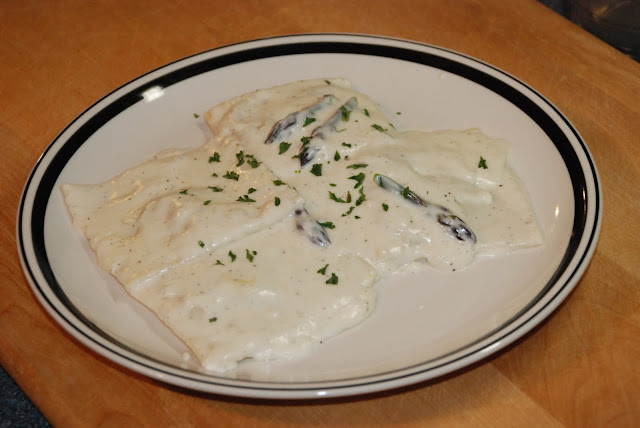One of the many skills I acquired in college was pizza making. I worked at a pizza shop for a short time and learned all I could about making the dough, sauce and pizza itself. This skill has served me well over the years and I have hosted many pizza parties and have gotten several compliments as well. I haven't made pizza in quite a while because of time constraints, but I noticed my local grocery store carries pre-made pizza dough balls in the refrigerated section and they are pretty good. Good enough to forgo the trouble of making my own pizza dough and easy enough to make pizza more often.
There are certain techniques and equipment you need to make real pizzeria style pizza at home. As far as equipment is concerned you will need a baking stone, a wooden pizza peel and an oven that can bake at 550F or higher. The restaurant I worked at kept their oven at 575F to 600F. I will discuss the techniques below as needed.
Pizza Sauce
6 oz can tomato paste
2 1/2 cans of water
1 tsp dried oregano
1 tsp dried parsley
1 tbsp salt
1 tsp pepper
1 tsp garlic powder
1 tsp sugar
Mix it all very well and put it in the fridge for a day before using it.
Cheese Pizza
pizza sauce (recipe above)
pizza dough (store bought or homemade)
corn meal (for the peel)
flour (for preparation)
mozzarella cheese
Before making any pizza, put your pizza stone in the oven with only one rack located in the center at 550 degrees Farenheit. If your oven will go higher use any higher value up to 600 degrees farenheit. I usually do this first and then start preparing everything to actually make the pizza. Don't start making the pizza until your oven has reached the temperature you want to cook the pizza at because the stone needs to heat with the oven. This may take 30 minutes.
Stretch the dough to the size of your peel. This technique will take some time to master. Hopefully the pictures will help explain the process.
Pizza Sauce
6 oz can tomato paste
2 1/2 cans of water
1 tsp dried oregano
1 tsp dried parsley
1 tbsp salt
1 tsp pepper
1 tsp garlic powder
1 tsp sugar
Mix it all very well and put it in the fridge for a day before using it.
Cheese Pizza
pizza sauce (recipe above)
pizza dough (store bought or homemade)
corn meal (for the peel)
flour (for preparation)
mozzarella cheese
Before making any pizza, put your pizza stone in the oven with only one rack located in the center at 550 degrees Farenheit. If your oven will go higher use any higher value up to 600 degrees farenheit. I usually do this first and then start preparing everything to actually make the pizza. Don't start making the pizza until your oven has reached the temperature you want to cook the pizza at because the stone needs to heat with the oven. This may take 30 minutes.
Spread corn meal on your peel.
Start by flouring your working surface and both sides of the dough.
Press your fingers into the dough about one inch in from the edge all the way around.
With thumbs together, place the fingers of both hands into the indentation in the dough.
Spread your hands apart, turn the dough about 90 degrees ...
... repeat the process ...
... several times ...
... until the dough is spread out enough to drape over both fists.
Continue the same circular spreading motion with your fists ...
... as you did with your fingers above ...
... until the diameter of the dough is the size of your peel.
Lay the dough on the peel.
Spread your sauce on the dough. Do not press hard or your dough may stick to the peel.
Spread your cheese.
Place the peel near the back of the pizza stone and with tiny jerking motions slide the peel out from under the pizza leaving it centered as best you can on the stone. If the dough sticks to the peel at this stage you will have a gigantic mess ... take my word for it and don't let your dough stick to the wood! the corn meal should act like tiny ball bearings and the pizza should roll right off of the peel. The pizza will take about 6 minutes at 550 and 5 minutes at 600. At the 3 minute mark you can spin the pizza 180 degrees if your oven does not cook evenly.
Finished product.
White Pizza With Asparagus
alfredo sauce (Recipe)
pizza dough (store bought or homemade)
corn meal (for the peel)
handful of asparagus
flour (for preparation)
mozzarella cheese
alfredo sauce (Recipe)
pizza dough (store bought or homemade)
corn meal (for the peel)
handful of asparagus
flour (for preparation)
mozzarella cheese
I use a microwave as often as I can to cut down on prep time. Steaming vegetables is definitely one of those time saving activities.
I put my asparagus on a plate with a little water, cover with plastic wrap and microwave for 2 minutes. Dry the asparagus off and cut into thirds.
Follow the dough process from above.
Spread your sauce.
Spread your cheese and toppings
Slide the pizza off the peel.
Finished product.
If you decide to try pizza making, I would love to hear back from you.
TTFN
B.































